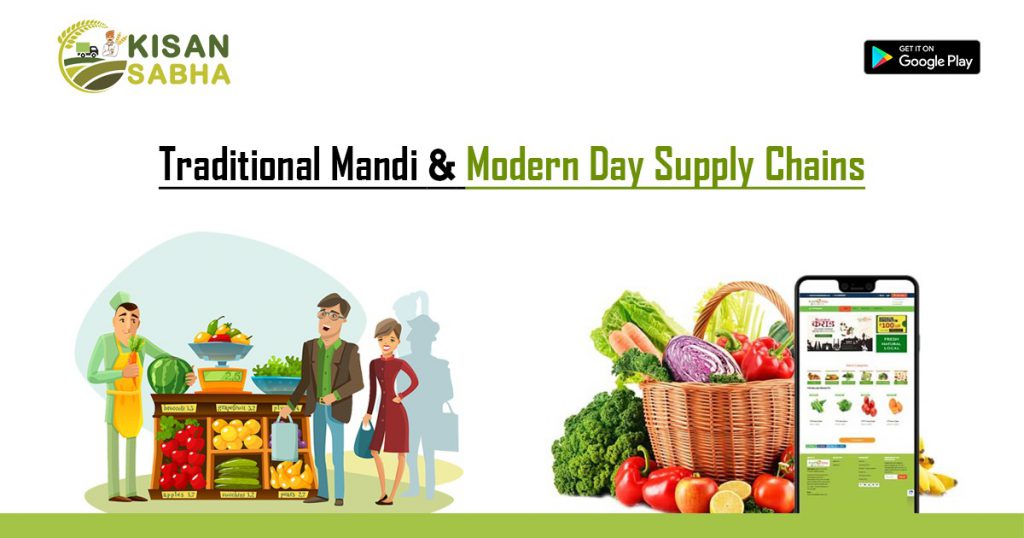Traditional Mandi Structure
The mandi essentially functions as a market where farmers sell their produce to customers through AUCTION. The APMC’s rules are followed when operating it. The adithis at the mandi, who hold licenses and are given a store in the market, facilitate the auction. Adithis are commission agents or middlemen. Additional goods that will be sold in the mandi are ‘notified’ by APMC. Only the mandi in its region is permitted to sell the commodities that have been notified. These goods are unable to be sold by farmers to consumers directly.
So, early in the morning on a mandi day, farmers (or their representatives) bring their produce to the mandi where the commission brokers auction it off to the buyers. They charge a fee, ranging from 5% to 10% of the selling price, as a commission for facilitating the transaction. The commission agents are in charge of maintaining Mandi’s infrastructure.

Modern-Day Supply Chain Structure
People want direct marketing, which involves consumers buying directly from farmers, to be permitted because the mandi monopoly is under attack. Everybody wants to establish a farm-to-fork supply chain that will link producers and consumers directly. According to the premise, this will cut down on waste and improve the effectiveness of the supply chain. A win-win situation for producers and consumers is created by the fact that there is just one intermediary and the farmer can receive a bigger price share of the final price. These new supply networks are typically beginning in communities close to cities. The chain is sustainable because of the high price of vegetables and the high rate of consumption in cities.
However, unlike the mandi system, where the farmer and adithi maintain a relationship more significant than just a business transaction, we are here linking farmers with far-off markets. The farmer and adithi live in the same village and regularly interact. In contrast, the customer in the new chain is unrelated to the farmer’s welfare. Their relationship is strictly professional, and they want to make the most money possible. The farmer can still sell it at the mandi even if the buyer leaves tomorrow. The mandi must, however, conduct transactions frequently in order to survive.
The farmer will be left without a market if the buyer purchases for two to three years before moving out when he finds the same goods in another village for less money. But in the interim, he generates enough revenue to go through a challenging season or two. What about the adjustments to his way of life? Why should our capitalist values degrade the simple earthman? Recall how the price of the vanilla crop fluctuated when the trade was switched from Africa to India and back.
Conclusion
The majority of these modern-day supply Chain models are also driven by the market, which is another aspect of them. The buyer provides a list of the commodities that the farmer should grow for his customers. These farmer platforms give farmers more negotiating leverage, decreasing their vulnerability to buyer exploitation.
Visit www.kisansabha.in for more details .




